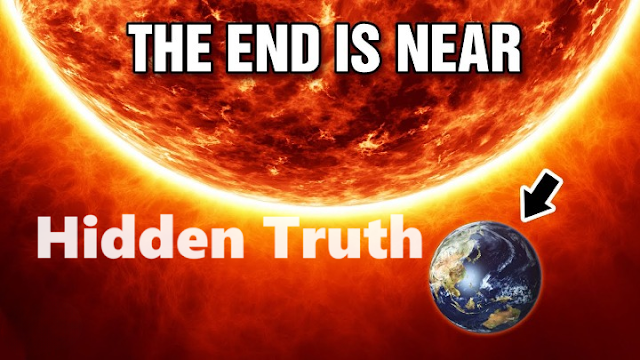The Sun's Supernova: Hidden Truth Exposed | Betelgeuse | Black Hole
Article:
Introduction
Could our own Sun go supernova? This question has captivated astronomers and the general public alike. While the Sun’s nature prevents it from undergoing a supernova, understanding this phenomenon offers insight into the lives and explosive deaths of massive stars like Betelgeuse. Recently, scientists studying Betelgeuse—a red supergiant poised for a future supernova—have made discoveries with implications that reach beyond Betelgeuse to the broader life cycles of stars, even revealing new potential pathways toward black hole formation.
Can the Sun Go Supernova?
The short answer is no, and the reason is rooted in the Sun’s mass. For a star to undergo a supernova, it must be at least eight times the mass of our Sun. This large mass enables such stars to go through extreme nuclear reactions and create heavier elements in their core, setting the stage for the dramatic collapse that triggers a supernova. Our Sun, on the other hand, is a yellow dwarf—a star with moderate mass that will eventually transition to a red giant, shed its outer layers, and end its life as a white dwarf, a faintly glowing remnant.
Betelgeuse: A Case Study in Stellar Death
Unlike the Sun, Betelgeuse has a mass approximately 15 to 20 times greater, making it a prime candidate for a supernova event. Located about 642 light-years away in the Orion constellation, Betelgeuse has been undergoing dramatic brightness fluctuations, which scientists believe are signs of its unstable state nearing the end of its life. These fluctuations, especially the Great Dimming in 2019, have been linked to significant mass ejections—gas and dust clouds surrounding the star that occasionally block its light.
But what does this mean for the fate of Betelgeuse? When its core can no longer sustain fusion reactions, it will collapse under gravity, leading to a powerful supernova explosion. This will likely create a neutron star or, if enough mass remains, even a black hole.
What Happens When a Star Goes Supernova?
A supernova is one of the universe's most powerful explosions, briefly outshining entire galaxies. During a supernova, a star’s core undergoes a gravitational collapse, producing intense heat and energy. The shockwave from this collapse causes the star to explode outward, dispersing elements like carbon, oxygen, and iron into space—materials essential for forming new stars, planets, and even life.
In some cases, the remnants of a supernova are dense enough to form a black hole. Black holes are regions in space with such powerful gravitational pull that not even light can escape. Betelgeuse’s eventual supernova could create a black hole, providing scientists with a rare opportunity to study how black holes form from red supergiants and giving new insights into cosmic evolution.
Black Holes and the Sun: Could They Coexist?
Although the Sun will not become a black hole, the study of black holes and massive stars like Betelgeuse helps us understand cosmic interactions within our galaxy. If a black hole were to form near the Sun, its gravity could have major effects on our solar system, from altering planetary orbits to disrupting cosmic debris. But as things stand, black holes are typically formed in more remote, massive star systems, so the Sun’s relatively quiet corner of the galaxy is quite safe from these extreme phenomena.
New Discoveries on Black Hole Formation
The James Webb Telescope and other powerful observatories have recently provided unprecedented insights into the environments surrounding massive stars like Betelgeuse. Some key findings include:
Irregular Mass Ejections: Massive stars nearing the end of their lives often shed large amounts of gas and dust, creating complex nebulae around them. These structures impact how the star’s final collapse occurs, which may influence whether the remnant becomes a neutron star or a black hole.
Magnetic Field Studies: New studies suggest that magnetic fields around massive stars may play a crucial role in the formation of black holes. Magnetic forces can shape the way gas flows and condenses, potentially impacting the star's collapse pattern.
Gravitational Waves and Supernova Explosions: Recent observations suggest that certain black hole formations may produce gravitational waves—ripples in space-time that result from massive objects moving at high speeds. When Betelgeuse goes supernova, if it produces a black hole, we might detect these waves, helping us trace the event and confirm black hole formation theories.
What Betelgeuse Tells Us About the Sun’s Future
Although the Sun won’t go supernova or become a black hole, studying Betelgeuse and similar stars provides a glimpse into our Sun’s eventual transformation. Here’s what will happen:
Red Giant Phase: In about 5 billion years, the Sun will expand into a red giant, engulfing the inner planets, possibly including Earth.
Planetary Nebula Formation: The Sun will shed its outer layers, creating a glowing nebula. This will last a few thousand years before dissipating.
White Dwarf Stage: The core that remains will cool down over billions of years as a white dwarf, eventually becoming a cold, dark remnant.
While the Sun’s journey is far less dramatic than Betelgeuse’s, these stages illustrate the diverse life cycles of stars based on their masses and provide scientists with a framework to study other sun-like stars across the galaxy.
Conclusion: Cosmic Mysteries Revealed
As Betelgeuse nears its explosive end, scientists are gathering crucial data that will reshape our understanding of star deaths, supernovae, and black holes. The Sun’s path may be gentler, but the study of Betelgeuse reveals how diverse and complex stellar evolution can be—and gives us a glimpse of the Sun’s fate, millions of years from now.
While we may never witness the Sun going supernova, observing Betelgeuse’s journey serves as a cosmic reminder of the spectacular and transformative power of the universe’s grandest events.
Hashtags:
#Supernova #Betelgeuse #BlackHole #Astronomy #SpaceScience #JamesWebbTelescope #RedSupergiant #StarLifeCycle #CosmicMysteries #UniverseExploration
Keywords:
Betelgeuse supernova, Sun black hole truth, can Sun go supernova, black hole formation, Betelgeuse explosion, stellar death processes, red supergiant supernova, star evolution stages, cosmic events in space, supernova predictions.

No comments:
Post a Comment